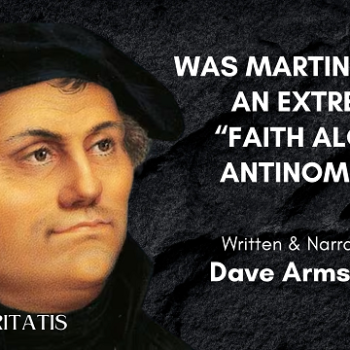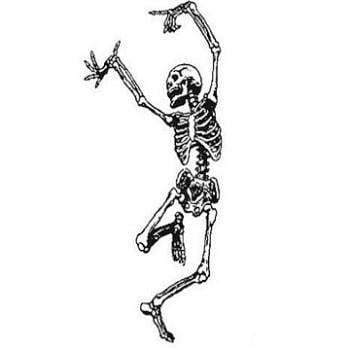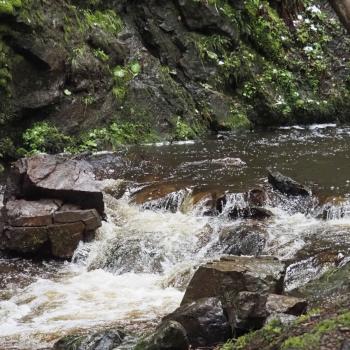Judaism's high holy days happened earlier this month, the "days of awe" between Rosh Hashanah and Yom Kippur. It's coming to the last week of October now, and like many modern Pagans, late October is a busy time for me ritually. However, the most convenient weekend closest to October 31st is not the only day of concern for me. Two of the traditions I practice have some of their most important holy days of the year during this time, and in both cases, the days involved are plural.
The one which is obvious, and which is shared by many types of modern Pagan, both reconstructionist and non-, is Samain (I use the Old Irish spelling), which is—strictly speaking—the evening going into the first of November (a month which in the modern Irish calendar is called Samhain), thus October 31st. (Marking a day as beginning with the preceding sunset is a custom also shared with Judaism, incidentally!) However, in some medieval sources, like Serglige Con Culainn, it is not simply a single-day feast or observance; the "thirds of Samain" are mentioned as being the three days before Samain, the three days after Samain, and Samain itself, which makes it a week-long festival from the 28th of October through the 3rd of November.
While there is some debate on this matter, it seems likely that this is a very old, and possibly pan-Celtic, festival. The Gaulish Coligny Calendar notes a trinox Samonii, the "three nights of Samain (?)," as an important set of holy days at the pinnacle of the year. However, modern scholars are not certain how to interpret this, and the suggestion has been made that perhaps this festival corresponds to Summer Solstice, not to the quarter-day of Samain. "Samain" itself was etymologized as "Summer's end" (sam + fuin), and as the beginning of the new year for the Irish. Just as the day began with dusk, so too does the year begin with the onset of darkness, just after the tipping point between the Autumnal Equinox and the Winter Solstice, the literal twilight moment of the yearly progression of the sun.
This will be the first time since 2007, however, that I will not have friends and community with me for Samain. Since 2007, I have observed this holiday in the company of others in an all-night vigil, which takes place at some point during the "thirds of Samain" that has been convenient for us. The night is spent reading Insular Celtic stories that have connections to this occasion, like Echtra Nerai, Airne Fíngein, and one year, we even were able to get through most of Táin Bó Cúailnge! Other tales that don't have a specific connection to Samain, but are merely interesting and enjoyable to read aloud in the company of friends, have included Togail Bruidne Da Derga, Aislinge Meic Con Glinne, and on one occasion, we read the Welsh Arthurian tale Culhwch ac Olwen, which took on an entirely different and far more humorous character when read aloud than it does when simply read silently and to oneself. The digressions on certain incidents were so hysterical that it took far longer to finish the story than it probably should have!
This particular aspect of our observances is based on the idea, again from Irish sources (this time legal texts), that for protection from supernatural incursions, poets must speak tales to their kings all night through. As we have no kings, but several poets, the protection afforded by such activities has been something that the whole group of practitioners has desired. Of course, a feast and honoring of the ancestors, as well as other ritual activities, are also part of the festivities.
One of my other traditions also has its most important holy day of the year in late October: the Ekklesía Antínoou celebrates Foundation Day on October 30th. We know this date was celebrated as the foundation of the city of Antinoöpolis in 130 C.E., when Antinous' drowned body was found on the banks of the Nile by his lover, the Roman Emperor Hadrian. It was also the day on which Antinous was first declared a god by the Egyptian priests, in accordance with their ancient tradition of according apotheosis to anyone who drowned in the holy Nile. It is, in essence, the beginning of the cultus of Antinous.
It is rare to know the exact time and place in which a particular religious phenomenon began, and we are lucky in the Ekklesía Antínoou to have this knowledge, and several ancient documents corroborating it. It was certainly celebrated in the city of Antinoöpolis itself, as one of the primary feasts of the city's eponymous hero, but it also seems to have been celebrated elsewhere in Egypt as well. I have observed this festival every year since the first modern occasion of it in 2002, sometimes with a small group of people, sometimes on my own. This year, it will be a very interesting celebration, because we will also be carrying out an initiation into the Antinoan Mysteries for one of our members; the usual ritual of the occasion will serve as a prelude to the deeper and more personal mystery that will immediately follow it. No matter what day of the week October 30th falls on, that is the date on which Foundation Day is observed.





